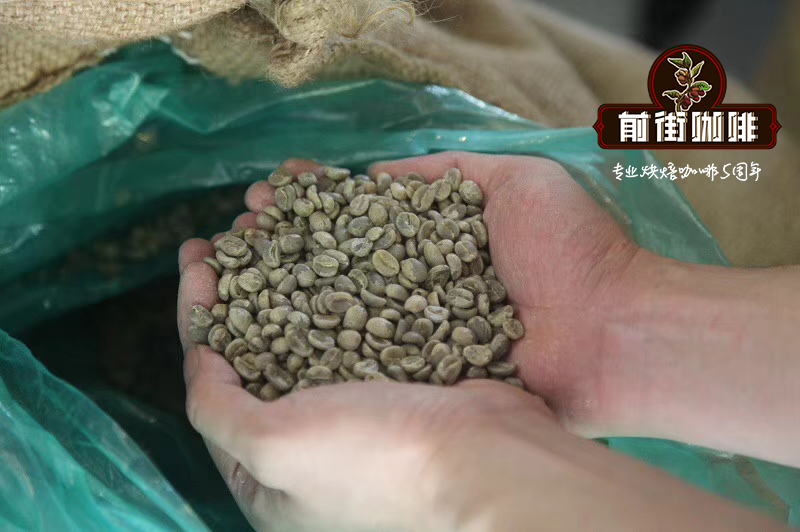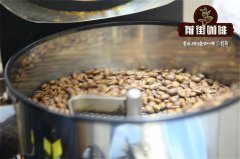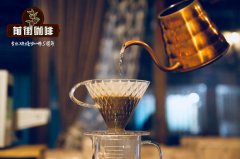How to make Brazilian yellow bourbon coffee by hand? how to calculate the ratio of water to powder in Brazilian yellow bourbon coffee?

Professional coffee knowledge exchange more coffee bean information please follow the coffee workshop (Wechat official account cafe_style)
Nationality: Brazil
Manor: Sertaozinho Manor
Producing area: Bothhos-Minas Gerais (Botelhos-Minas Gerais)
Altitude: 1200 m
Harvest season: April to September
Variety: yellow bourbon (Yellow Bourbon)
Treatment: semi-washing
Baking degree: shallow and medium baking (mid-explosion)
Dry fragrance: baked nuts, sesame seeds
Wet fragrance: hazelnut, caramel
Sipping: high sweetness, obvious greasy feeling, creamy smoothness
Yellow Bourbon (yellow bourbon), the ripening consequence is actually yellow, was first found in Brazil, and now mainly grows in Brazil. It is generally believed that it may have been mutated by a cross between a bourbon with red fruit and a variety of iron pickup with yellow fruit called "Amerelo de Botocatu".
In the eyes of many coffee lovers, the output of Brazilian coffee beans is huge, but the quality is very mediocre. But in recent years, as the world's largest output of coffee beans, Brazil also pays more and more attention to the cultivation of high-quality beans, so the high-quality boutique Huang bourbon also came into being!
Today, this Brazilian yellow bourbon comes from Setaozinho Manor, which is located in Botelius, Minas Gerais. In addition to the coffee trees, the manor also retains a 300-hectare natural rainforest, where there is no shortage of old Brazilian mahogany, one of which is 40 meters tall and is said to be 1500 years old, making it a farm symbol. The estate is managed by agronomist Joie Renato Goncalves Dias and provides accommodation, medical and educational facilities for workers. In recent years, the manor has performed well in the Brazilian Cup and has cultivated a number of varieties, such as mundo novo, catuai and so on.
Qianjie cooking parameters are suggested:
How to make Brazilian coffee [yellow bourbon]?
Qianjie Coffee hand reference: weigh 15g [yellow bourbon] coffee powder, pour into the grinder for medium grinding, the finished particles are slightly thicker than salt, we use BG bean grinder to scale 6A (standard sieve pass rate 50%), water temperature 88 degrees, kono/kalita filter cup extraction, recommended powder / water ratio around 1:14.
The hot water in the hand flushing pot draws a circle clockwise with the center of the filter cup. Start the time when brewing, brew the coffee to 30g in 15 seconds, then stop the water injection, and when the time is up to 1 minute, the second water injection. The second water injection is the same as before, draw a circle clockwise with the center of the filter cup, and the water flow should not rush to the place where the coffee powder is connected with the filter paper, so as not to produce channel effect.
Coffee powder to the outermost circle to set aside a circle, and then another circle to the middle, 2 minutes 10 seconds, to the coffee to 210g, brewing coffee is finished.
| | Japanese ice hand flush [Huang bourbon] |
Qianjie coffee ice hand flushing [yellow bourbon] reference:
Brazilian coffee [yellow bourbon], medium and deep roasting, BG bean grinder scale 5R (standard sieve pass rate 60%)
20 grams of powder, 150 grams of ice, 150 grams of hot water. The water temperature is 88 ℃ higher than the recommended normal hand flush, then 1 ℃ higher, the normal grinding small Fuji 3.5 scale, the ice hand flushing is slightly smaller than half a grid-small Fuji 3 scale, the recommended powder (water + ice) ratio is 1:15.
The amount of steaming water is 40 grams and the steaming time is 30 seconds.
Water injection by stages, 60 grams of water in the first section and 40 grams of water in the second section. Use a thin but high water injection column and stir hard to make the coffee powder fully tumble, but be careful that the water level is not too high and do not rush to the edge of the filter paper.
The whole extraction time is about two and a half minutes (close to the normal extraction time of 20 grams of powder).
END
Important Notice :
前街咖啡 FrontStreet Coffee has moved to new addredd:
FrontStreet Coffee Address: 315,Donghua East Road,GuangZhou
Tel:020 38364473
- Prev

A brief introduction to the tutorial on how to make Brazilian Coffee beans by hand
Professional coffee knowledge exchange more coffee bean information please follow the coffee workshop (Wechat official account cafe_style) Brazilian Coffee-Chocolate ◆ Chinese name: Brazilian Chocolate ◆ English name: BrazilChocola ◆ Coffee production area: Minas Gerais, Brazil ◆ Coffee Grade: NO
- Next

How to taste hand-brewed coffee Brazil Santos _ Brazil Santos coffee how to taste good
For more information on coffee beans, please follow the coffee workshop (Wechat official account cafe_style) 19th Century Santos Coffee is produced in the city of Santos, Brazil, which is the second largest seaport city and the largest coffee transportation port in Brazil. This kind of coffee tastes sour, sweet and bitter, with moderate concentration, slightly sour taste and comparative taste.
Related
- Detailed explanation of Jadeite planting Land in Panamanian Jadeite Manor introduction to the grading system of Jadeite competitive bidding, Red bid, Green bid and Rose Summer
- Story of Coffee planting in Brenka region of Costa Rica Stonehenge Manor anaerobic heavy honey treatment of flavor mouth
- What's on the barrel of Blue Mountain Coffee beans?
- Can American coffee also pull flowers? How to use hot American style to pull out a good-looking pattern?
- Can you make a cold extract with coffee beans? What is the right proportion for cold-extracted coffee formula?
- Indonesian PWN Gold Mandrine Coffee Origin Features Flavor How to Chong? Mandolin coffee is American.
- A brief introduction to the flavor characteristics of Brazilian yellow bourbon coffee beans
- What is the effect of different water quality on the flavor of cold-extracted coffee? What kind of water is best for brewing coffee?
- Why do you think of Rose Summer whenever you mention Panamanian coffee?
- Introduction to the characteristics of authentic blue mountain coffee bean producing areas? What is the CIB Coffee Authority in Jamaica?

